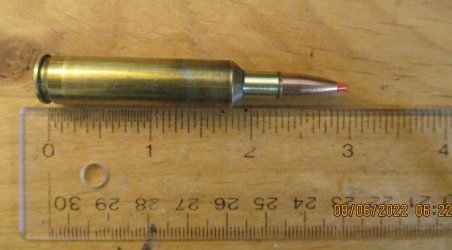I now anneal after every firing and guess what- no discernable difference in velocity between cases fired 4 times and those fired 10 times. (Lapua, 6.5cm 270 win 243 win). I still track batches though. But it means i can acually span 2 batches of different "generations" while testing loads and know that any differences are from changes in the load, not the fact that they were shot from different batches. I suffix batches with a letter, starting with A and progressing alphabetically. My M cases produce the same velocity as G cases with the same loads.
No turning, no expander ball, full size only, bushing die. (Abandoned neck sizing). Though for my BAR I do use the expander because necks sometimes get dented/deformed. When using an expander ball i lube the inside of the neck, then remove the lube with an isopropyl dampened cotton swab. The cases get beat up by automatic ejection process before primer pockets ever give way.
As most of us do, i seek single digit SDs, and get them on all rifles, even the BAR (270).

